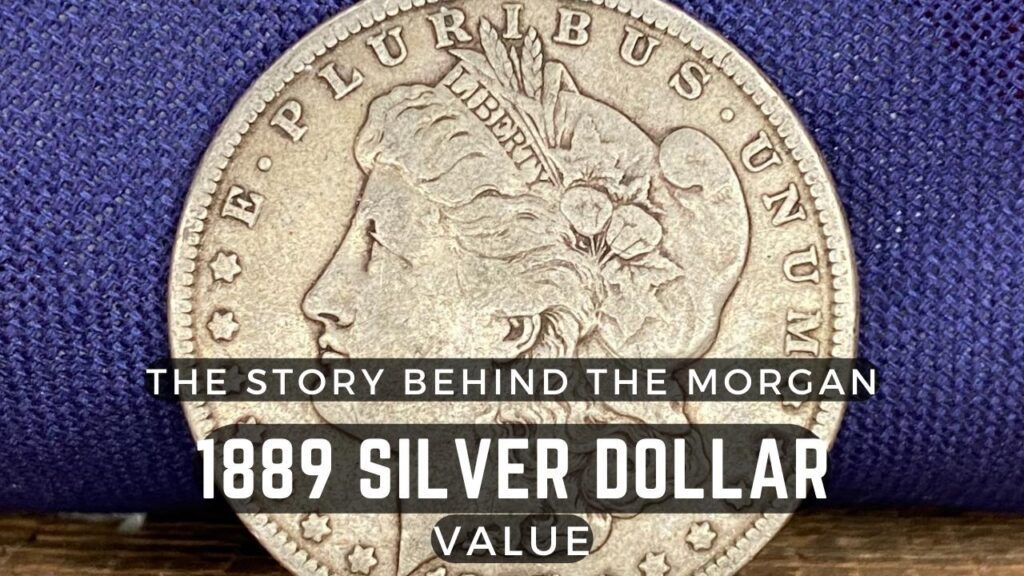Whether new to coin collecting or a lifelong enthusiast, the 1889 Morgan Silver Dollar value should be understood and appreciated.
Its significance in U.S. coinage history cannot be understated.
Unfortunately, many misconceptions about the actual value of an 1889 Morgan silver dollar are floating around. So let’s clear a few things up.
What Is an 1889 Morgan Silver Dollar?
The 1889 Morgan silver dollar gets its name from its designer, George T. Morgan, and the year it was minted.
It features a left-facing Lady Liberty on its obverse and an eagle clutching an olive branch on the reverse.
The obverse is where you can also find the 1889 inscription and a border of stars with the words “E PLURIBUS UNUM” scrolled across the top.
Despite an original mintage number of over 34 million, the 1889 Morgan silver dollar is rare today.
Most of the coins were melted down due to the 1942 Silver Act and the 1918 Pittman Act.
It’s estimated that only 15% of U.S. Silver dollars survived.
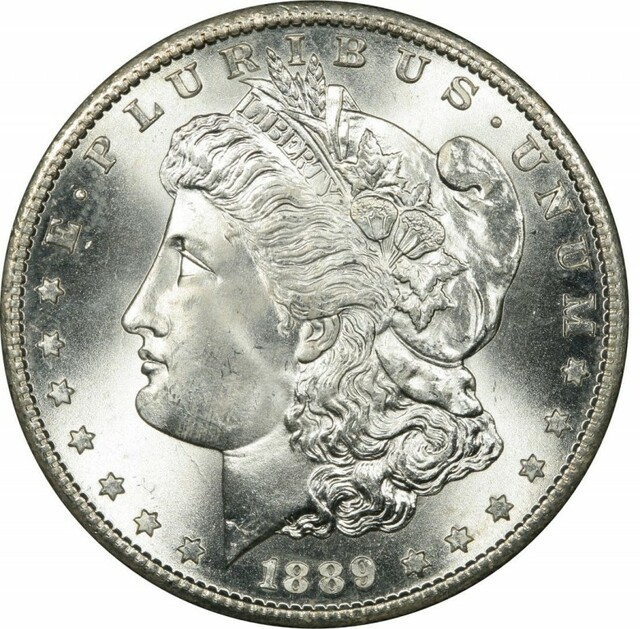
1918 Pittman Act and the 1942 Silver Act
In 1918, Great Britain was in the middle of World War I. They desperately needed silver bullion to back bank notes.
Long story short, U.S. Senator Key Pittman of Nevada proposed a bill that would melt 270 million silver dollars to be sold to Britain.
It was nearly half the Morgan dollar series mintage, and it would change the future of coin collecting by sharply reducing the silver coinage supply.
1942 Silver Act
It wasn’t just the Pittman Act that impacted the Morgan silver dollar series.
The Great Depression and World War II increased the demand for silver and prices rose. Another 53 million silver dollars were sent to the melting pot after the 1942 Silver Act was passed.
In average condition, the 1889 Morgan silver dollar is worth about $40.
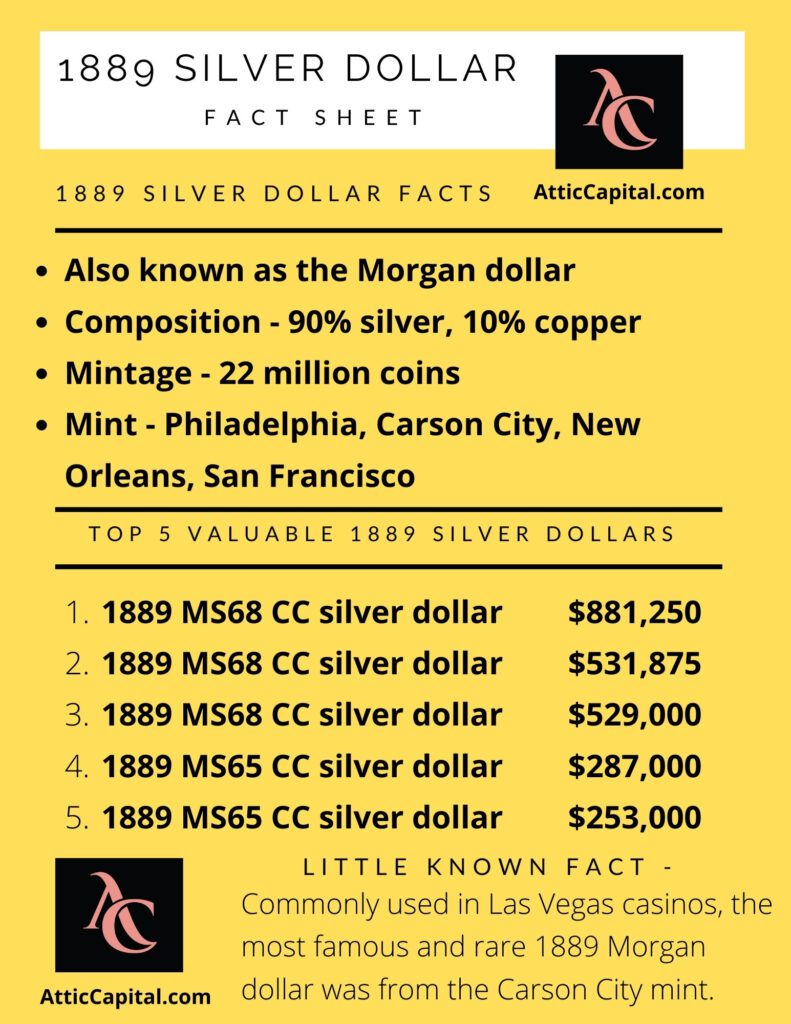
Uncirculated NGC-graded mint condition examples can be worth more than $400, and proof coins are valued at more than $3,000.
A silver dollar currently contains roughly $19 worth of silver, but the precious metal purchase price fluctuates.
For many other reasons, 1889 Morgan silver dollar varieties can be worth far more than their melt value.
How Much Are 1889 Silver Dollars Worth?
Silver dollars can be worth anywhere between $25 and tens of thousands – even hundreds of thousands.
But the exact value of a silver dollar will depend on its condition and what mint it came from.
The mint mark is significant because it indicates how rare or common a coin is by the production numbers from a particular mint.
In general, high mintages are worth less in the rare coin markets.
Detailed information on the value of silver coin prices from the four different mints can be found below.
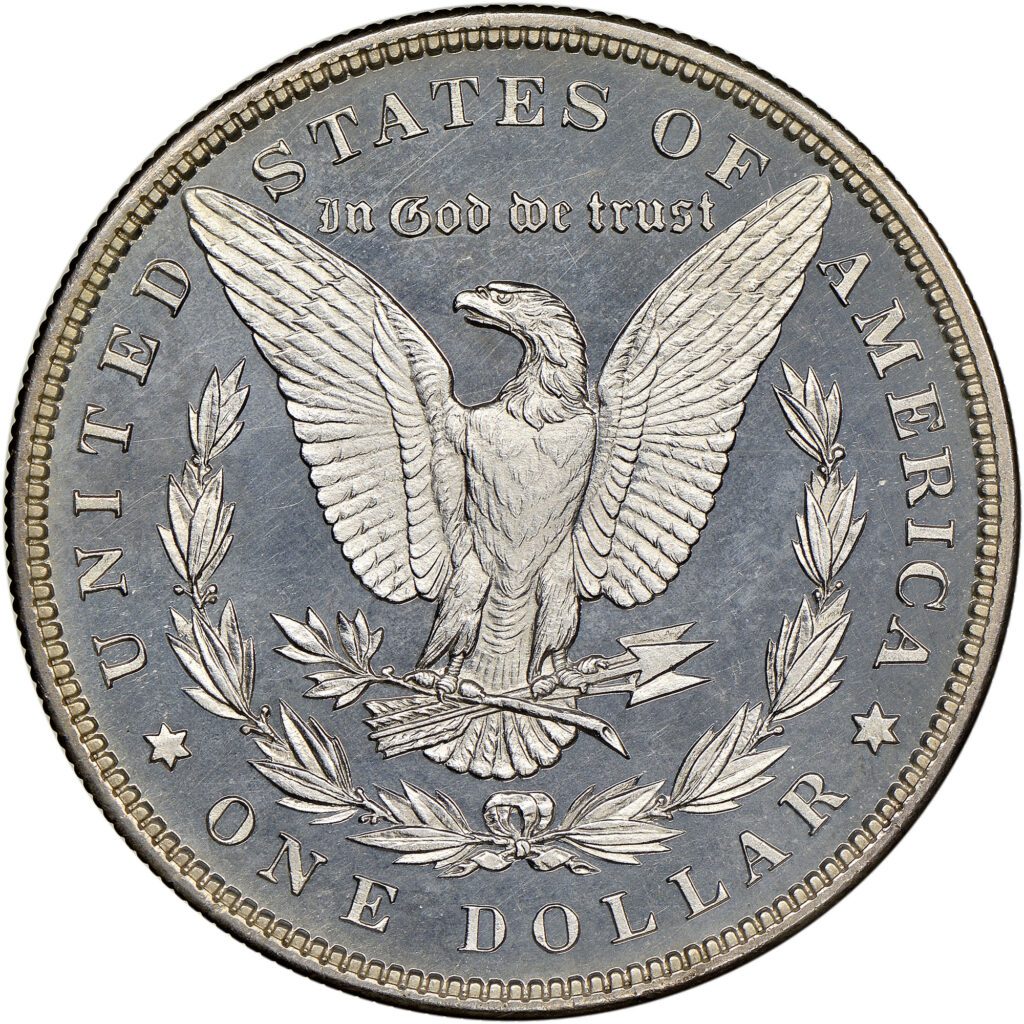
Philadelphia – P Morgan Silver Dollar Value (No Mint Mark)
Most Morgan silver dollars were minted in Philadelphia, making them the most common and least valuable of the four mintings.
Silver dollars from this mint are selling for $25 in good condition and can be purchased for $50 in extra-fine condition.
There won’t be a “P” mintmark; the Philadelphia mint produced no mint mark on their silver dollar coins.
New Orleans – O 1889 Silver Dollar Value
Silver dollars minted at the New Orleans Mint are slightly rarer than their Philadelphia counterparts and usually sell for about the same price for most grades.

However, the O Morgan silver dollar coin surpasses the unmarked Philadelphia coin when you get higher grades like uncirculated and mint state 65.
San Francisco – S 1889 Silver Dollar Value
The San Francisco – S Morgan silver dollars are the second rarest of the 1889 silver dollars.
Coins from this mint in good condition can sell for about $50. Coins in fine condition sell for $70, and extra-fine coins can fetch nearly $90.

Carson City – CC Morgan Silver Dollar Value
As the rarest Morgan silver dollar, coins bearing the famous “CC” mint mark sell for an average price of $1,000 in good condition.
Upwards of $7,500 for coins graded as extra fine.
1889 CC Morgan silver dollars are a grail for many coin collectors, with most people counting themselves lucky to see one in person.

Proof Morgan Silver Dollar
Just 811 Morgan silver dollar proofs were minted in 1889. Buy prices range from $1,000 to tens of thousands of dollars for these rare-proof specimens.
Most Valuable 1889 Morgan Silver Dollars
1889-CC Morgan Dollar, MS-68 PCGS – $881,250
This amazing 1889 CC Morgan Silver Dollar was sold for an auction record of $881,250 at a Stacks Bowers auction in 2013.
The finest certified numismatic example, graded by PCGS with an MS-68 rating.
The coin was sold from the Louis E. Eliasberg Collection, one of the largest and highest-quality coin collections ever assembled.
Louis E. Eliasberg, the former owner of the 1889 CC Morgan, is best known for assembling the only complete collection of U.S. coins of exceptionally high quality.
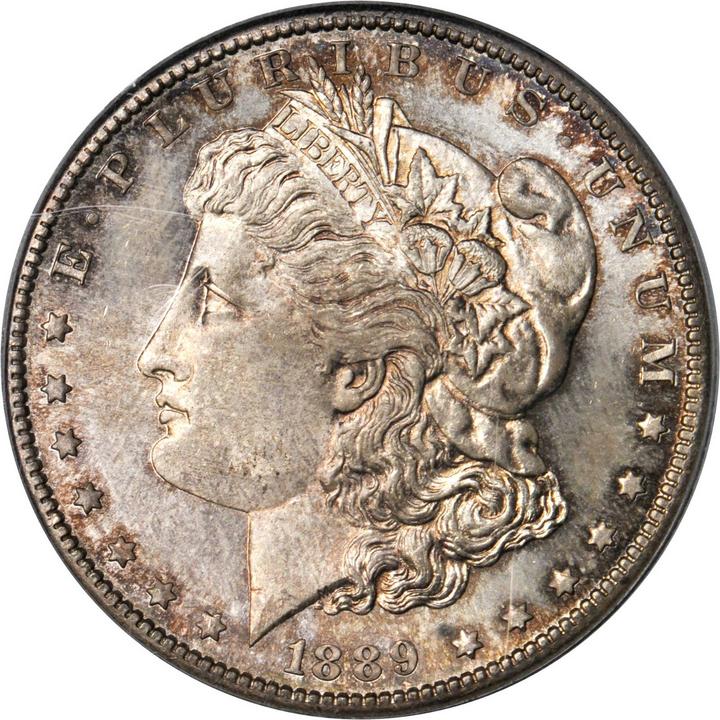
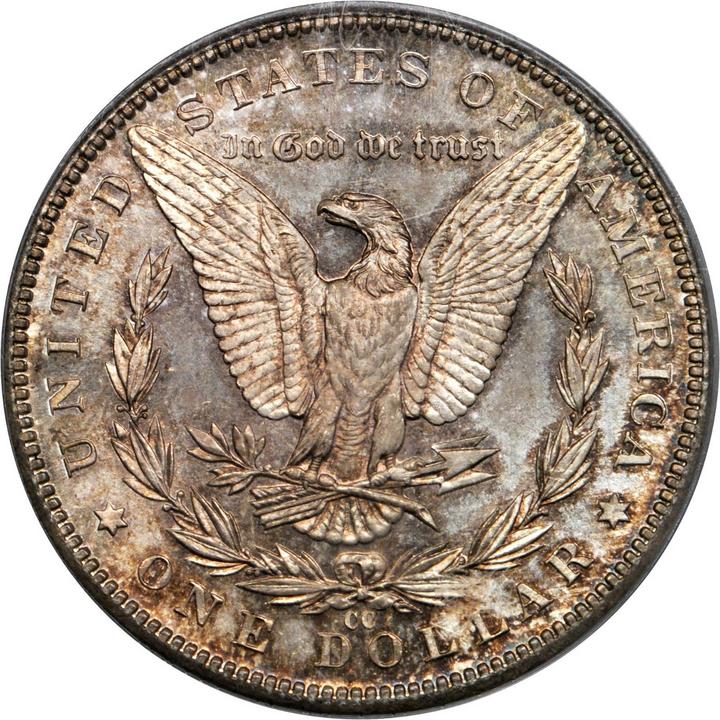
1889-O Morgan Silver Dollar, MS65 – $84,000
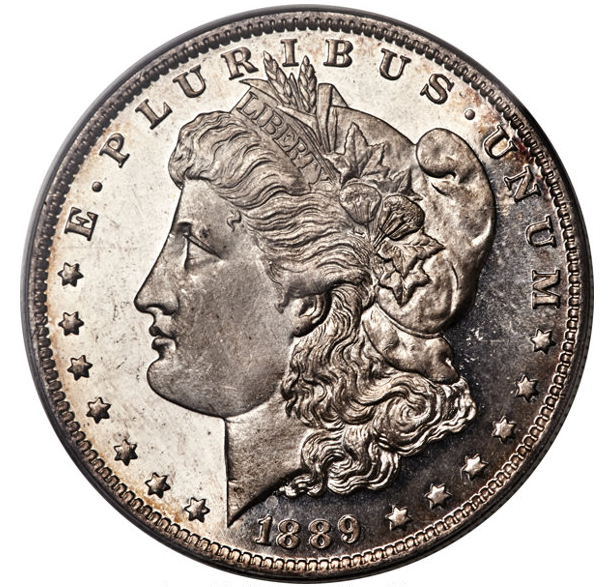
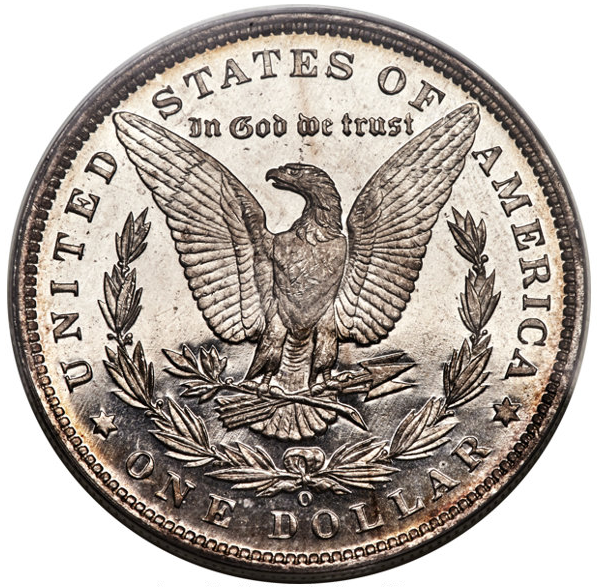
1889 Morgan Silver Dollar Proof, PR68 – $34,500
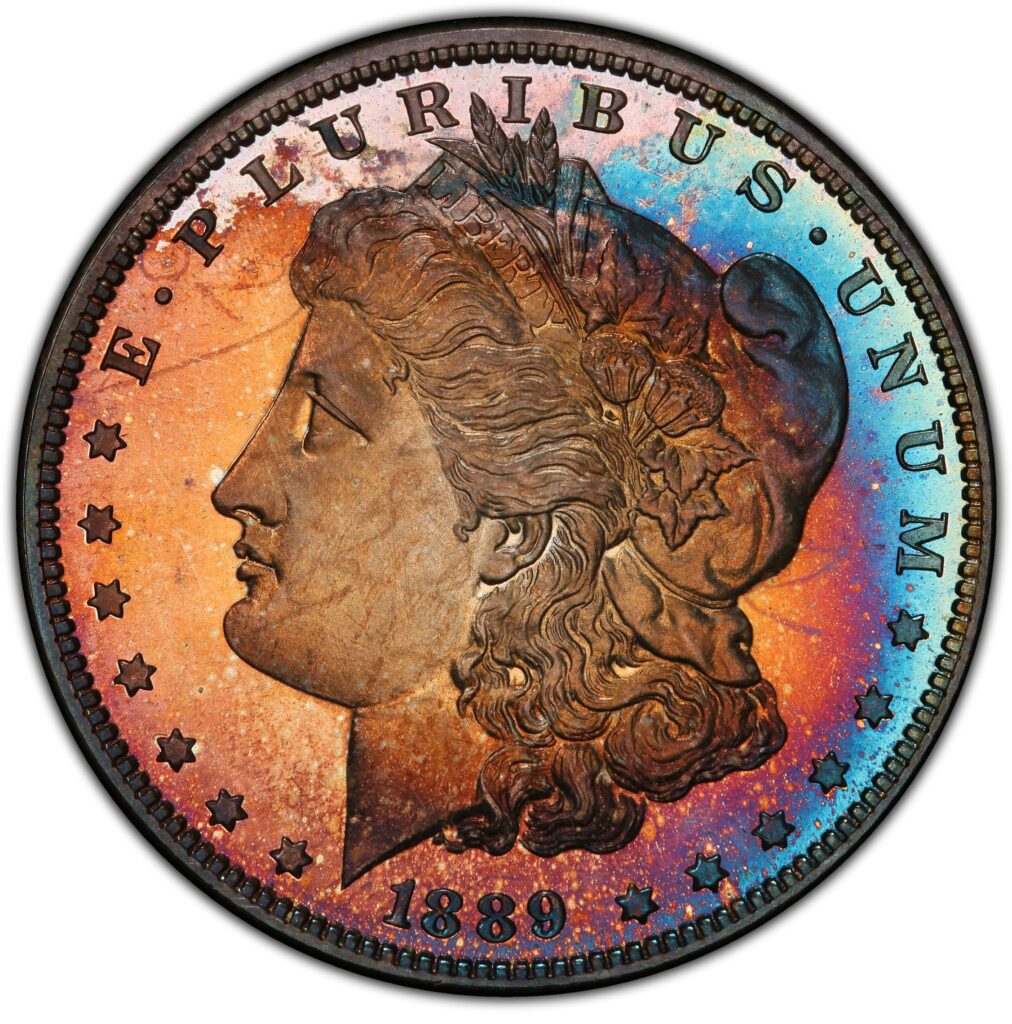
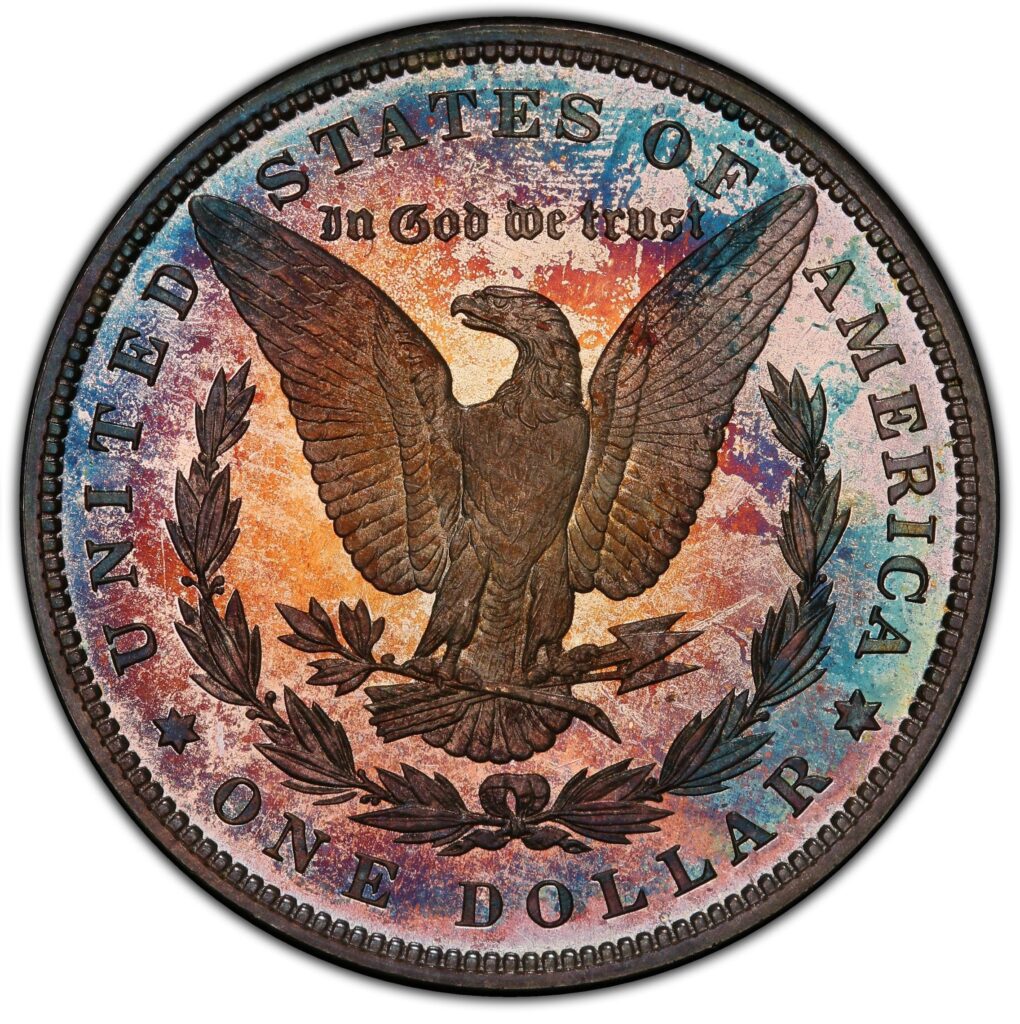
1889 Morgan Silver Dollar, MS68 – $25,300
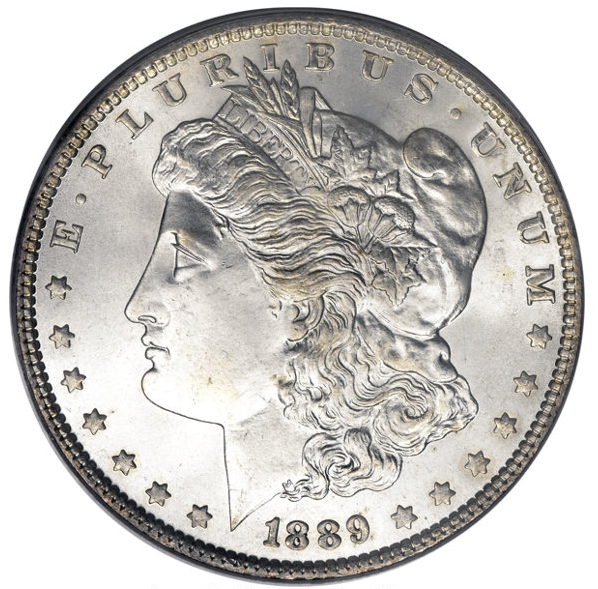
How Much Silver Is in a Morgan Silver Dollar?
Although it’s rare to find a silver dollar coin in circulation in the wild today, they are not a thing of the past.
Many coin dealers and collectors still chase these unique coins due to their relatively high silver content.
All Morgan silver dollar money contain 10% copper and 90% silver, no matter what year they were minted.
For 1889 Morgan silver dollars with a total weight of .8594 troy ounces, roughly 24.05 grams, or 0.7734 troy ounces, was silver.
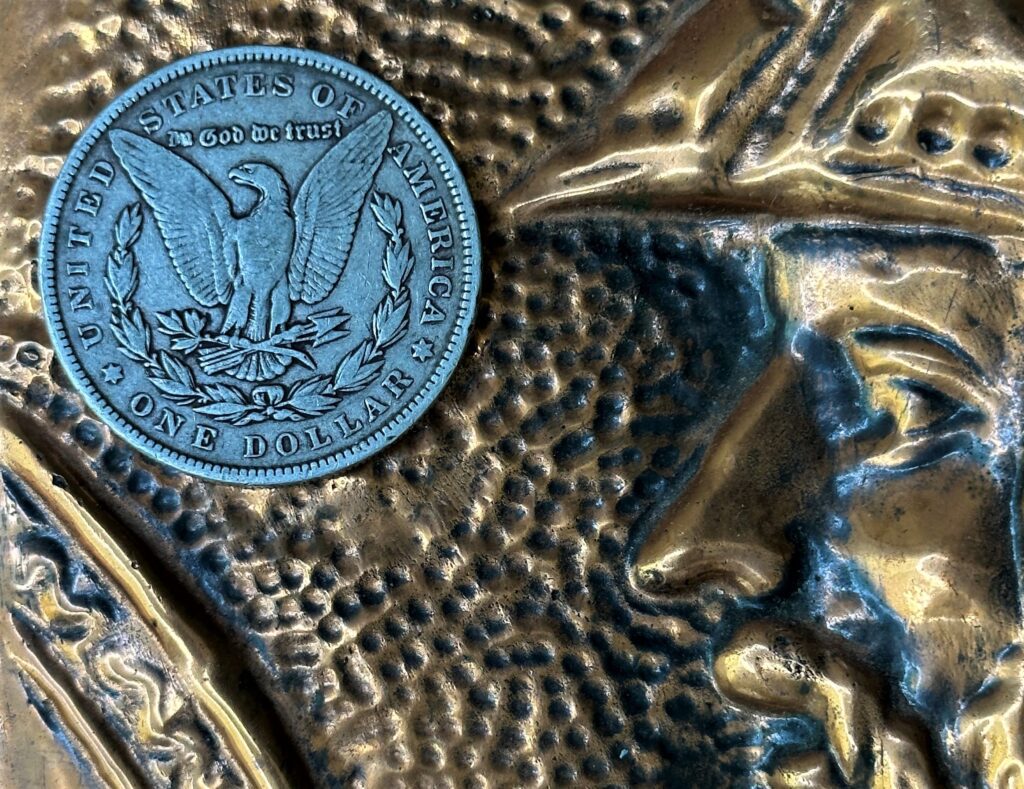
How to Tell Where an 1889 Silver Dollar Was Minted
Although all silver dollars have the same silver composition, the U.S. Mint where they were struck, impacts their value.
Four United States Mint locations produced the Morgan silver dollar.
Determining which one produced the silver coin in your hand is simple.
You must look closely below the eagle on the coin’s reverse side.
You’ll find a small marking that will clue you into your coin’s origins.
Philadelphia Mint
If your silver dollar doesn’t have any marking below the eagle, it is a telltale sign that it came from the Philadelphia Mint.
Silver dollars minted at the Philadelphia Mint are the only 1889 silver dollars that lack an identifying mint mark.
San Francisco Mint
If you find a small “S” below the eagle, your silver dollar was minted at the San Francisco Mint. This is the second-rarest mint of Morgan silver dollars.
New Orleans Mint
Silver dollars produced at the New Orleans U.S. Mint bear a small “O” beneath the eagle on the coin’s reverse side.
Carson City Mint
A small “CC” identifies a silver dollar from the Carson City Mint. These coins usually fetch the highest prices since they are the rarest.
With just 350,000 1889 Morgan silver dollars minted at the Carson City location, they are few and far between and an exceptional find for coin collectors today.
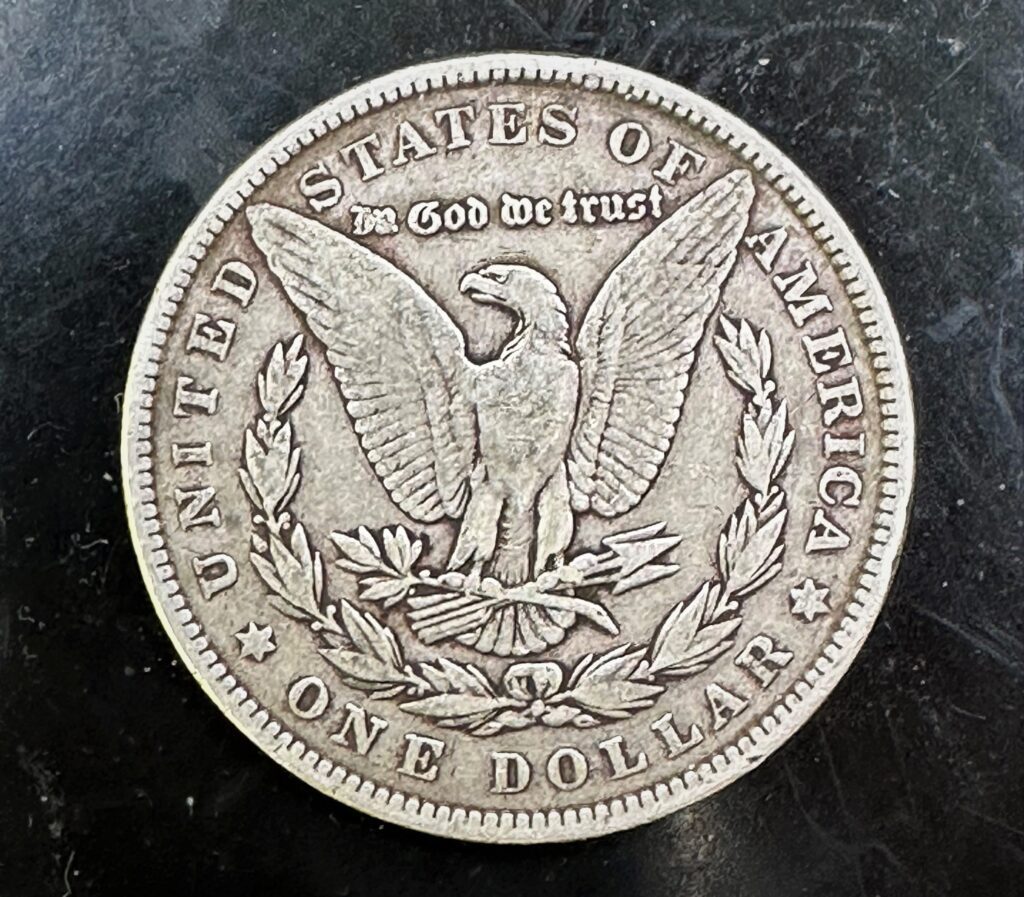
The Comstock Lode
The Comstock Lode, named after silver miner Henry Comstock, produced enough silver for the U.S. Government to build an entire mint.
CC Morgans represent the enormous silver lodes discovered in Nevada toward the end of the 19th century.
From 1860 to 1880, the Comstock Lode was a source of more silver and gold than all the other mines in the U.S. combined.
Carson City Morgan dollars in average grades are still worth hundreds of dollars.
Evaluating the 1889 Silver Dollar Value
Morgan silver dollars have a face value of just one dollar, but their actual market value corresponds more closely with the current silver spot price.
As the value of silver fluctuates, so does the general value of silver coins.
However, the deciding factors of a specific coin’s value are its condition and the presence of any errors.
What Does VAM Mean on a Morgan Dollar?
Leroy Van Allen and George Mallis published a book titled, “The Comprehensive Catalog and Encyclopedia of Morgan and Peace Dollars.”
Their goal was to document every die variety for the coins.
VAM is the combination of the initials of the two men who wrote the book. Since its first publishing in 1971, the book has been revised and updated several times.
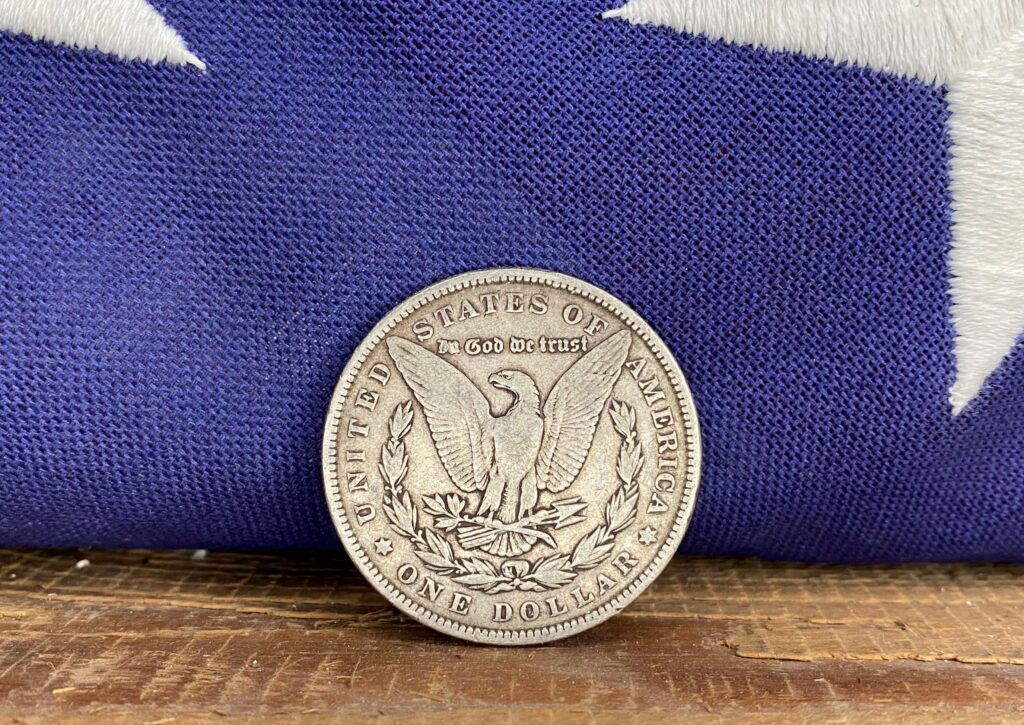
Morgan Silver Dollar Condition
Like most collectible items, coins have a grading system to determine their condition.
Below are the four most common grades you will run across while growing your coin collection.
Good
This is the lowest grade that most collectors are willing to settle for. Coins in this category have been in circulation for years and show extensive signs of wear.
They are in poor condition and may even be heavily damaged. It falls under this category if you are lucky enough to find a silver dollar in the wild.
Details may be hard to make out, but as long as the coin isn’t wrecked, it can be salvaged as a collectible.
Unfortunately, anything graded below good has little value for coin dealers and collectors.
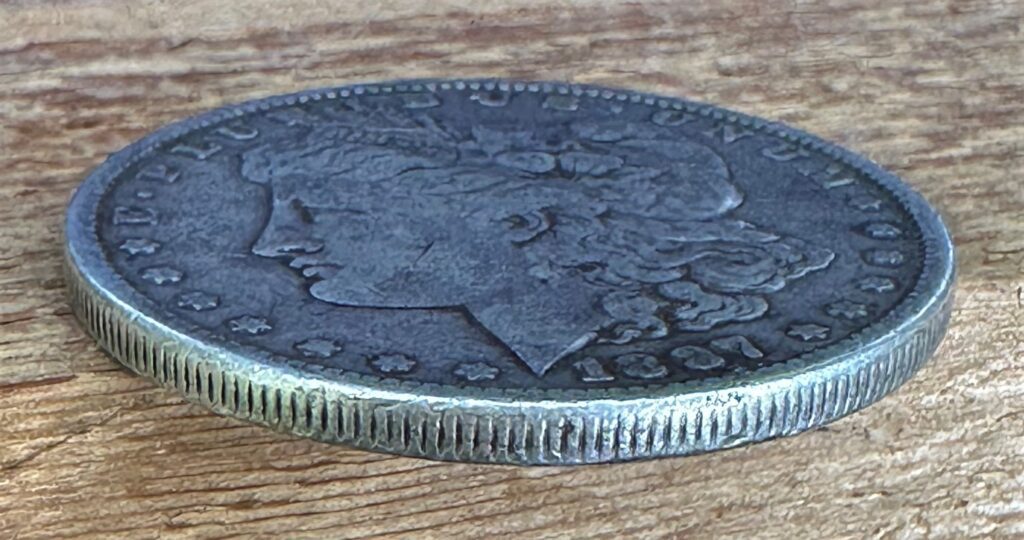
Fine
Coins in this category are in decent overall shape and have significantly less damage than “good” coins. However, they still show signs of wear and could be better.
Extra Fine
For a coin to be considered extra fine, it must be free of any signs of wear or damage besides a very light scratch or two.
Uncirculated Silver Dollars
Uncirculated coins are as close to mint condition as they come and are the hardest to find.
These coins graded in high grades have never been in circulation and therefore show no signs of usage.
Uncirculated condition coins still possess their bright and shiny luster from the day they were created and fetch the highest prices at auction.
Consider taking your uncirculated Morgan’s to a coin shop for examination, or submit to NCG or PCGS for grading to preserve the value of your coin collection.
Silver Dollar Error Coins
Every coin collector knows that coins with errors are worth significantly more than perfectly minted ones, and Morgan silver dollars are no exception.
Some errors found on 1889 Morgan silver dollars include a die break at the top of the eagle’s right wing, a slightly shifted date, ear doubling, and clashes on the obverse.
Silver Coins as a Financial Safety Net
Silver coins are more than a shiny collection to show off; they are an investment that grows in value over time.
Silver coins are increasingly desirable, whether American silver eagles, half dollars, or Morgan’s.
Many coin collectors collect silver coins as a form of financial safety net, similar to silver bullion.
Some collectors focus on wheat pennies, indian head pennies, or even Roosevelt dimes. But with silver dollars, you have an added feature not found in dimes and pennies.
Not only do you get the enjoyment of collecting historically significant coins, but you are also building a piece of a diversified portfolio with a touch of silver included.
Let’s Go Deeper on 1889 Morgan Silver Dollar Value –
So Far, We Learned –
- Although 34 million Morgan silver dollars were struck in 1889, only 15% of those coins survived after the Pittman Act ordered silver coins to be melted down.
- The most valuable 1889 Morgan silver dollars were stuck at the Carson City Mint, with the highest auction sale price of $881,250 in 2013.
- The highest sale price for a Morgan silver dollar was from the famous Louis E. Eliasberg Collection, one of the greatest rare coin collections ever assembled.
But There’s Still More to Discuss About the 1889 Morgan –
- Only 350,000 Morgan’s from 1889 were struck at the Carson City Mint. And many of those coins were used in Vegas slot machines for many years, making excellent condition coins a valuable rarity.
- Politics played a heavy role in the Morgan silver dollar. Congressman Richard “Silver Dick” Bland led the way in 1878 with an order for the Treasury to purchase $2 to $4 million worth of silver every month for the minting of silver dollars.
- 500 million silver dollars were struck at U.S. Mints between 1878 and 1904. Thanks to the Comstock Lode silver mining in Nevada, the country was extracting nearly $40 million worth of silver every year.
More To Learn About Rare Coin Collecting –
- I need help selling my coins online!
- Can you help me value my rare coin collection?
- How many different U.S. coins are there?
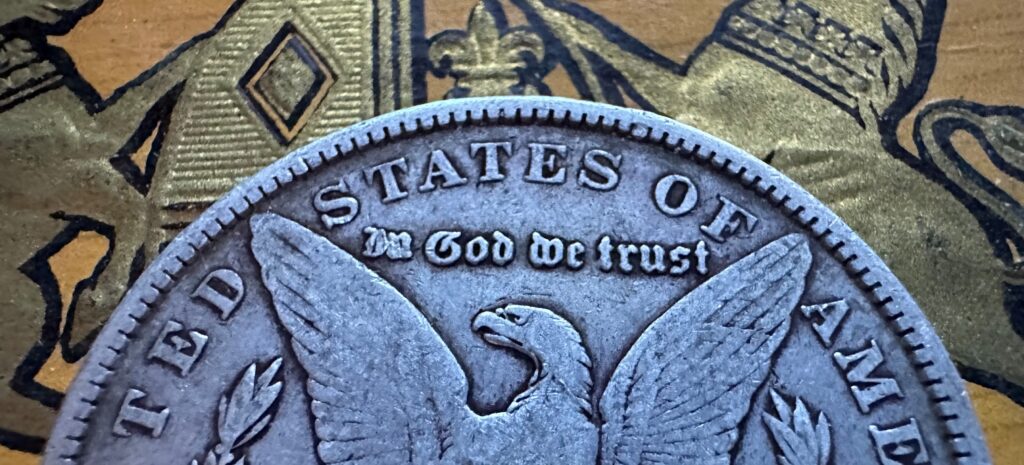
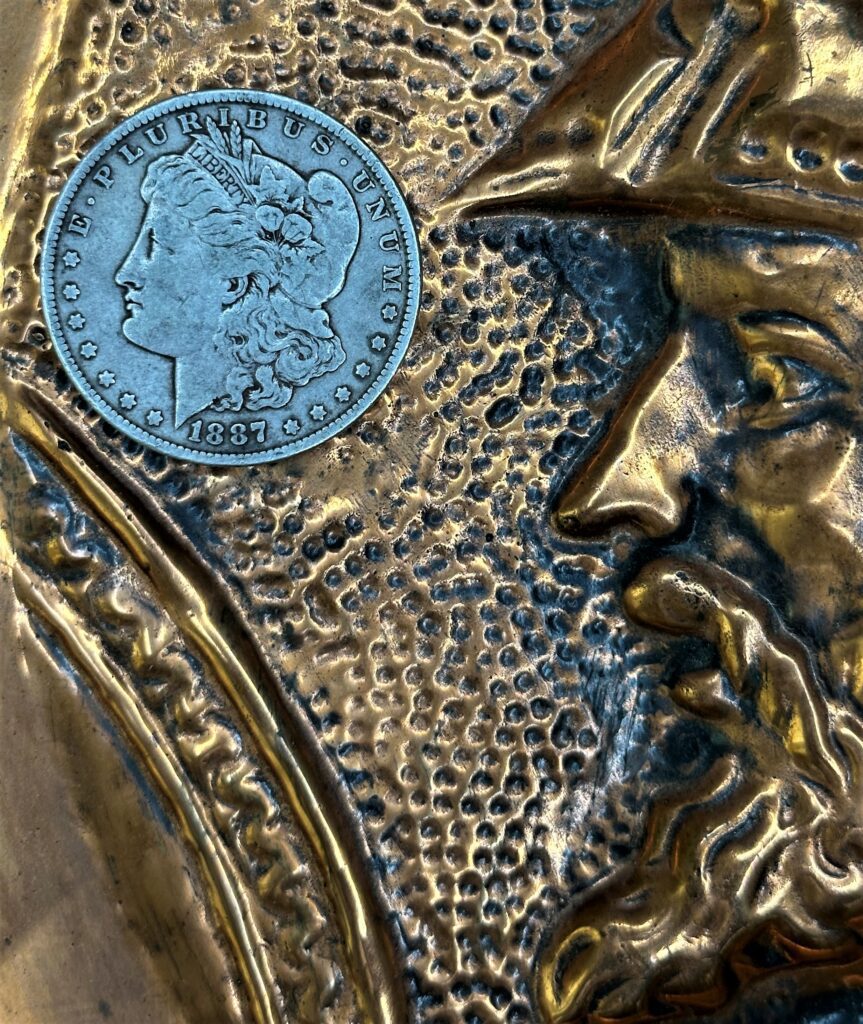
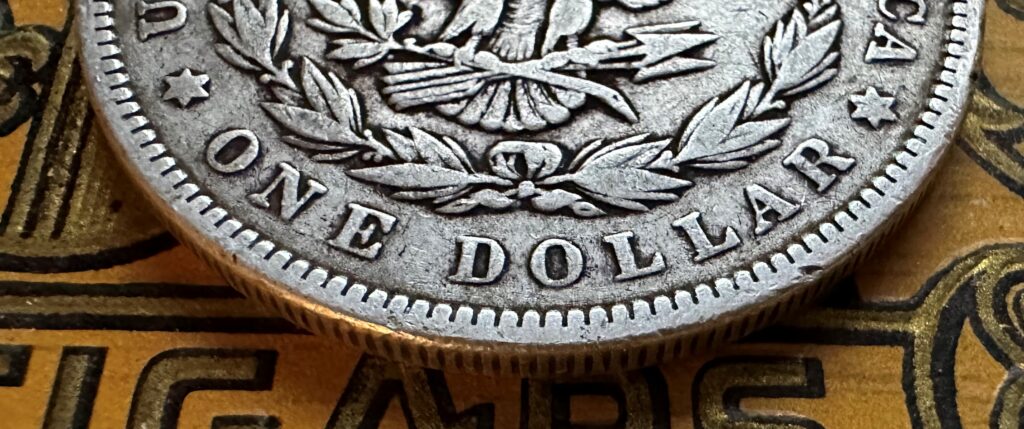
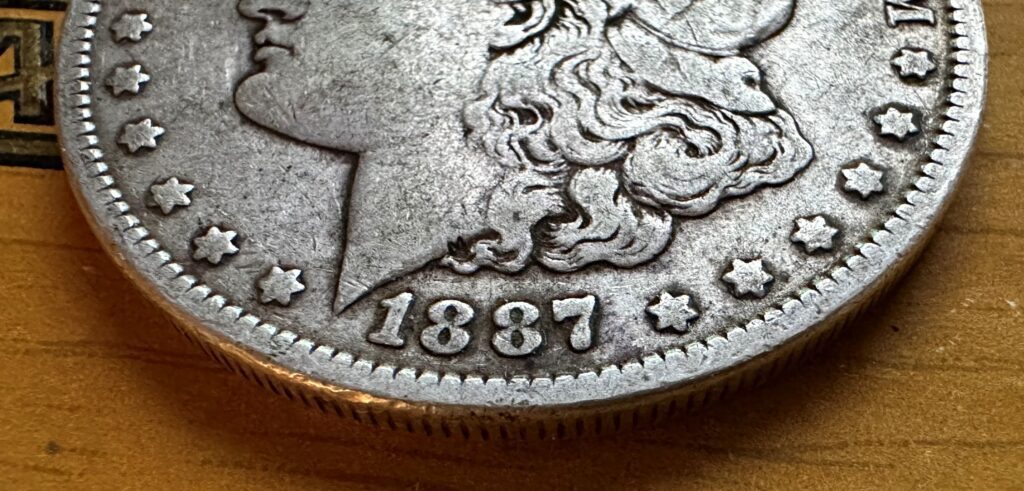
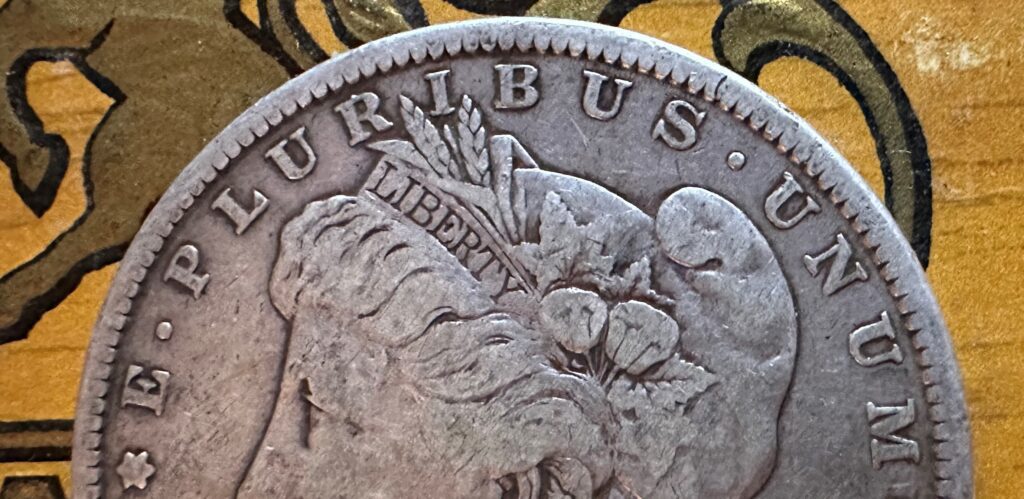
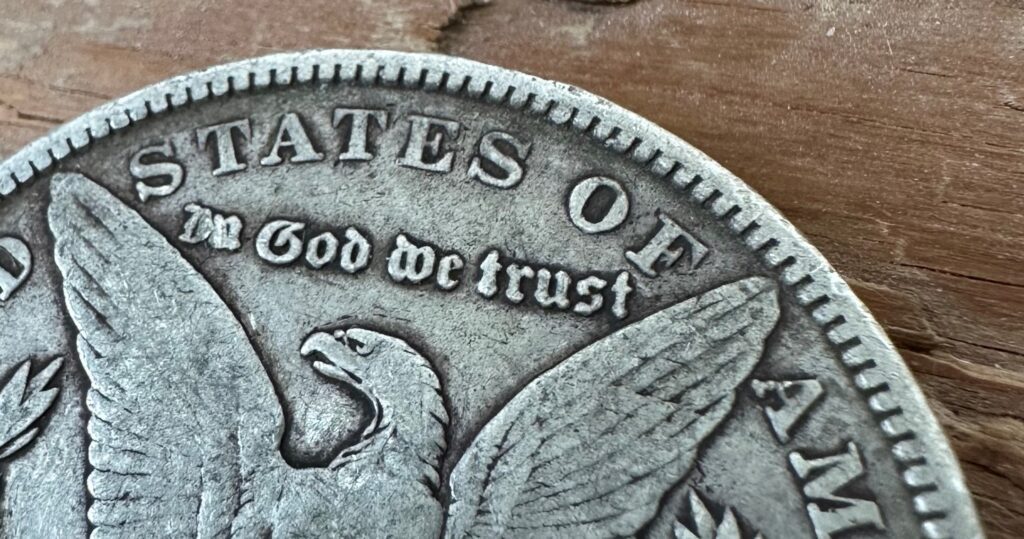
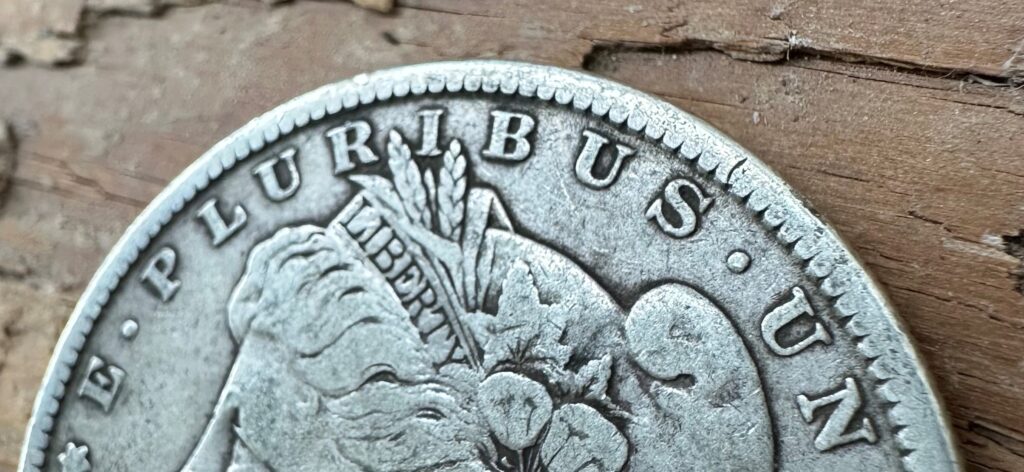
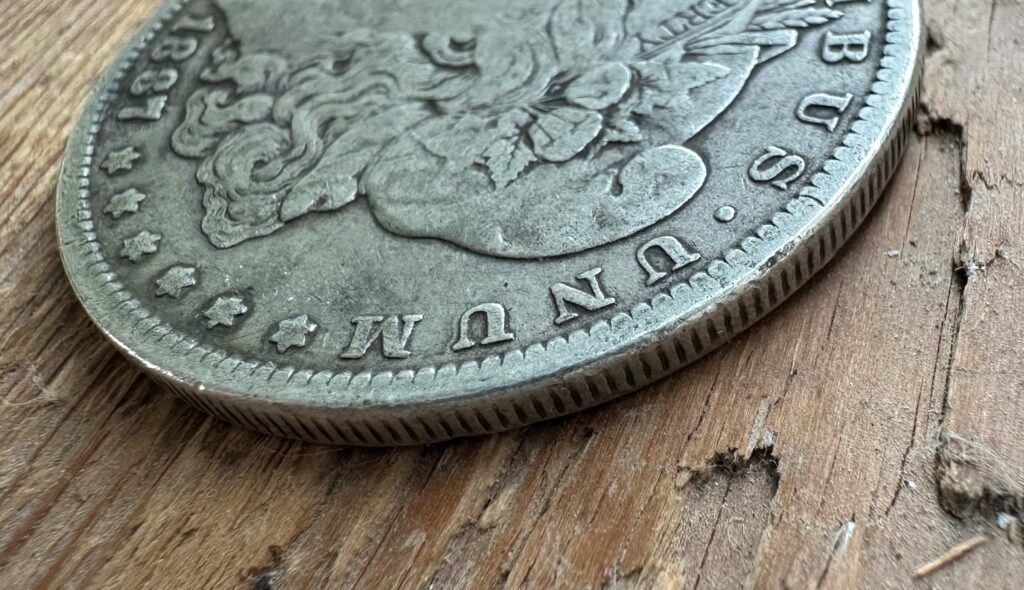
How Do I Sell My Coins? —> Top 7 Best Places to Sell Coins Online
